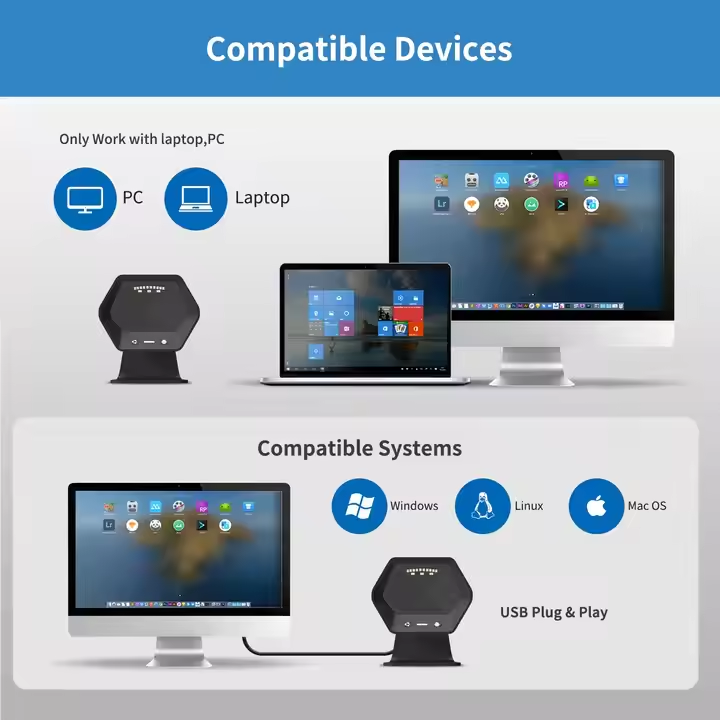A desktop barcode scanner is a barcode recognition device designed for fixed-position use. It typically takes the form of a compact box or similar structure, equipped with a scanning window and an interface for connecting to other devices. It operates based on advanced optical imaging and decoding technology. When an item bearing a barcode approaches the scanning window, internal optical components quickly capture the barcode pattern and convert it into an electrical signal. This signal is then rapidly decoded by a built-in decoding chip, ultimately transmitting the barcode's information to a connected device, such as a computer or cash register.
Compared to other types of barcode scanning devices, desktop barcode scanners offer significant advantages. They require no manual operation; users simply aim the barcode at the scanning window, significantly reducing labor intensity and making them particularly suitable for long-term, high-frequency scanning tasks. Their automatic sensing function is also very practical: when a barcode enters the scanning area, the device automatically initiates the scanning process, eliminating the need for manual triggering and significantly improving operational efficiency. In terms of recognition performance, desktop barcode scanners offer excellent results, quickly and accurately recognizing a wide range of common barcodes, even those with some wear, stains, or deformation. Furthermore, it supports a wide range of barcode types, from traditional 1D codes to complex 2D codes. Its rugged construction and high-quality materials make it durable enough to withstand even the most challenging operating environments, ensuring long-term stable operation, reducing malfunctions, and lowering maintenance costs.

Desktop barcode scanners have a wide range of applications. They are particularly useful at the checkout stage in the retail industry. Cashiers simply hold the product barcode close to the desktop barcode scanner to instantly read the product information and enter the price, speeding up the checkout process, reducing customer wait times, and significantly improving the shopping experience. In warehousing and logistics, workers use desktop barcode scanners to batch scan barcodes on incoming and outgoing goods, efficiently performing inventory counts and tracking goods, ensuring efficient logistics processes. In office settings, document management is also essential. By scanning barcodes on documents, they can quickly classify, archive, and retrieve them, significantly improving office efficiency.
For example, after introducing desktop barcode scanners at a large supermarket chain, checkout efficiency has significantly improved, with average transaction time reduced by nearly one-third and customer satisfaction significantly increased. Furthermore, due to its ease of operation, new employees can become proficient after simple training, reducing training costs.
Desktop barcode scanners, with their convenience, efficiency, and accuracy, have become a vital tool for optimizing workflows and improving efficiency across many industries. With the continuous advancement of technology, they are bound to be applied in more areas, bringing greater convenience and innovation to our lives and work.

